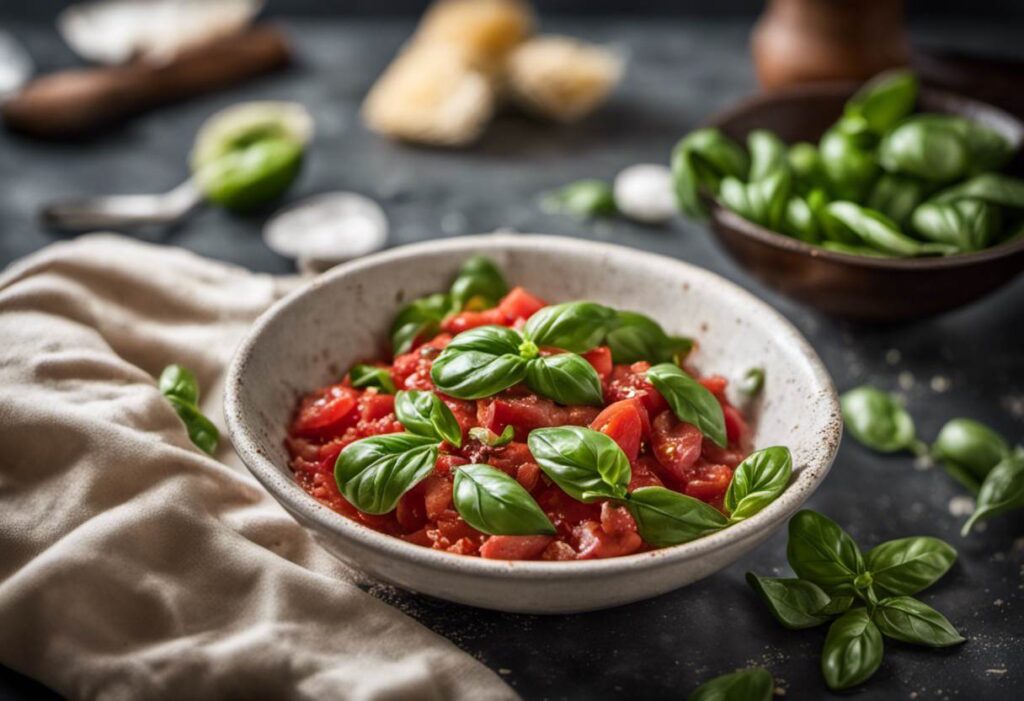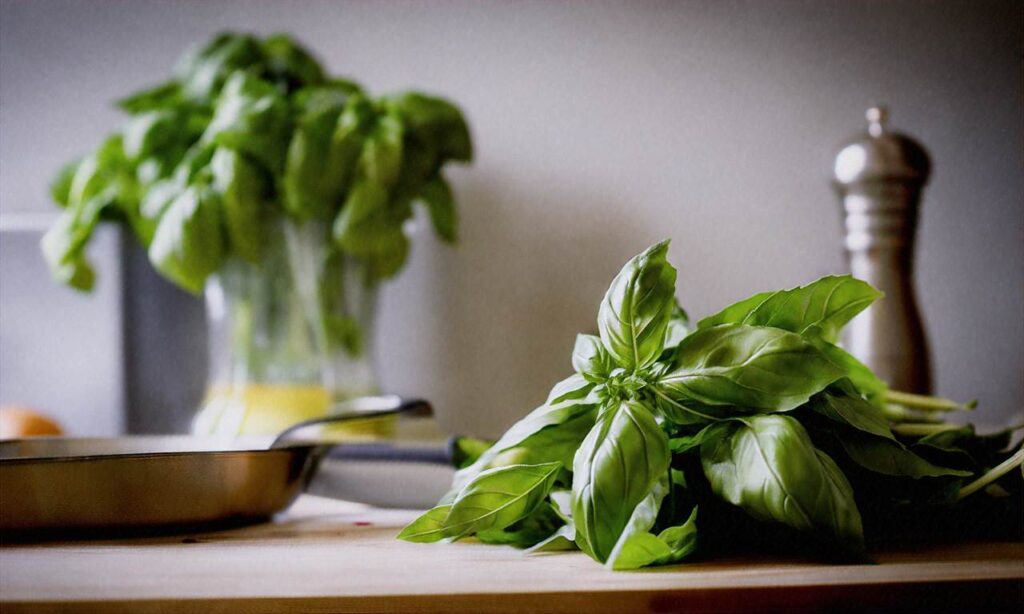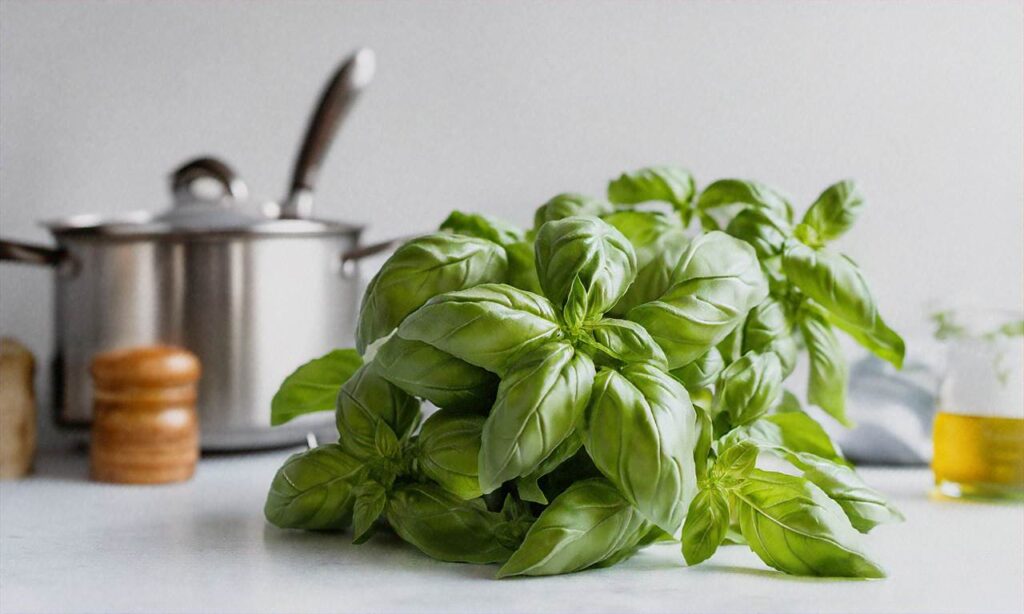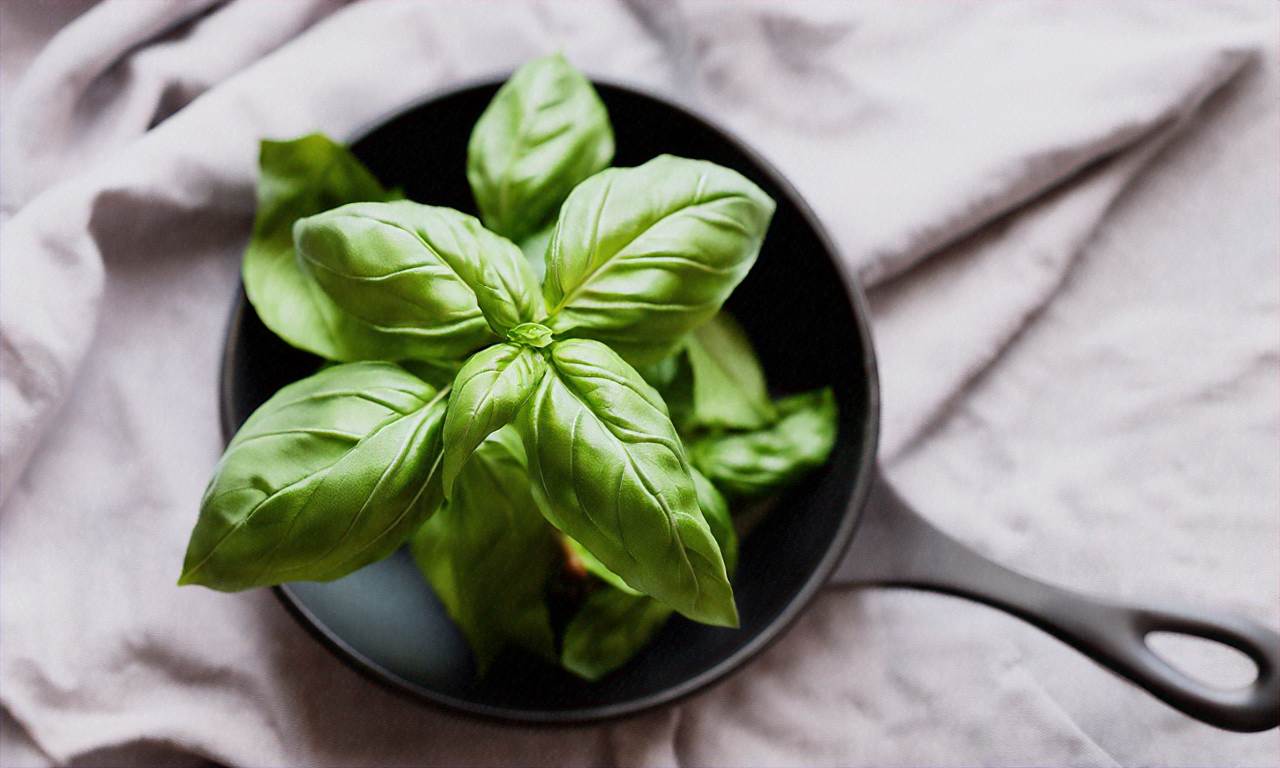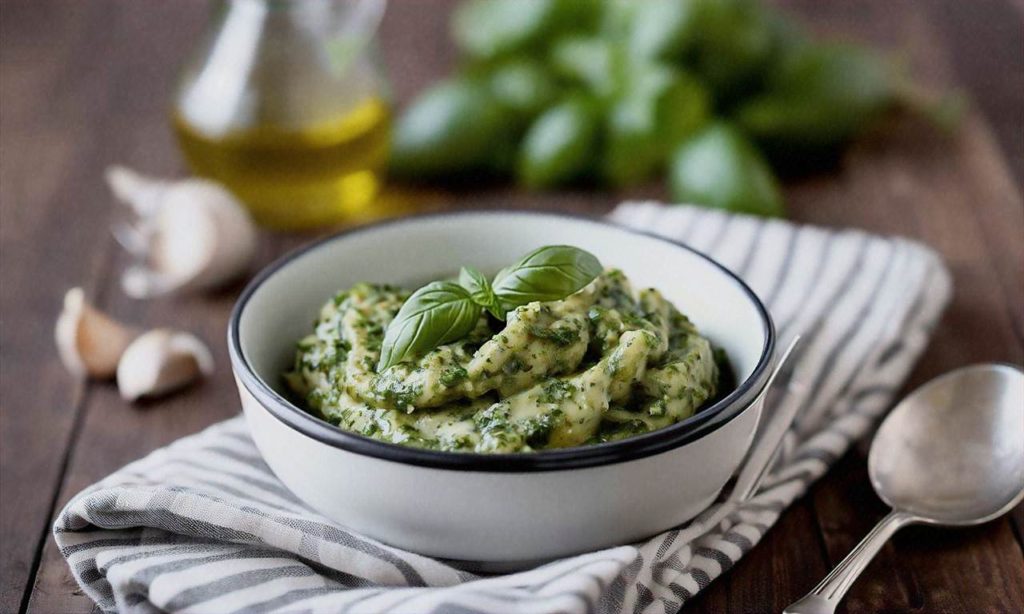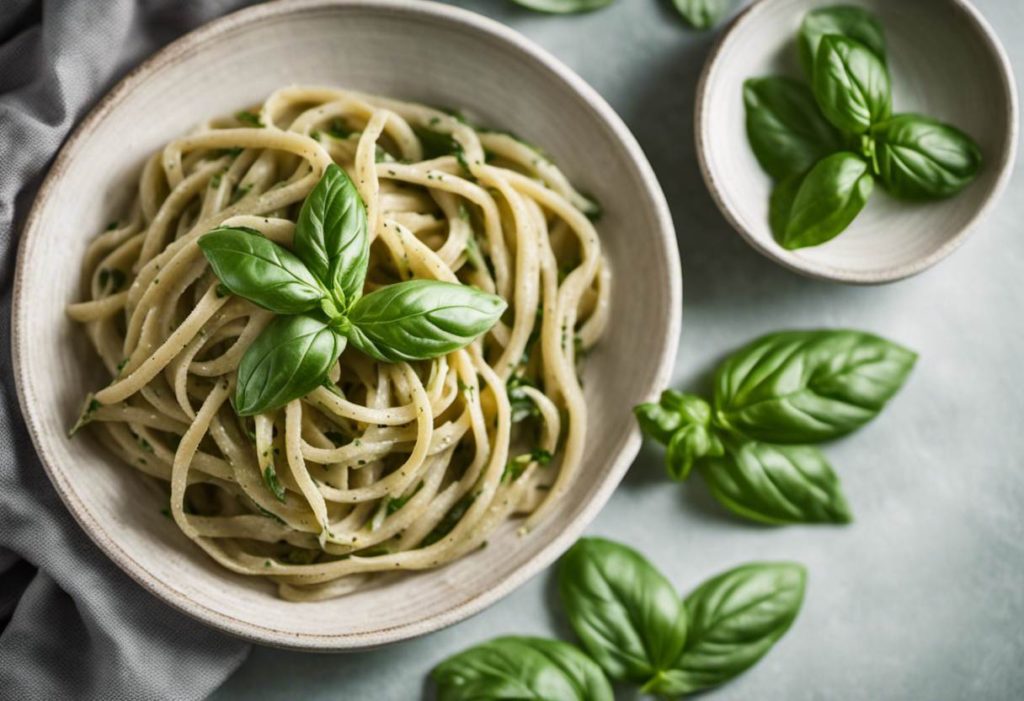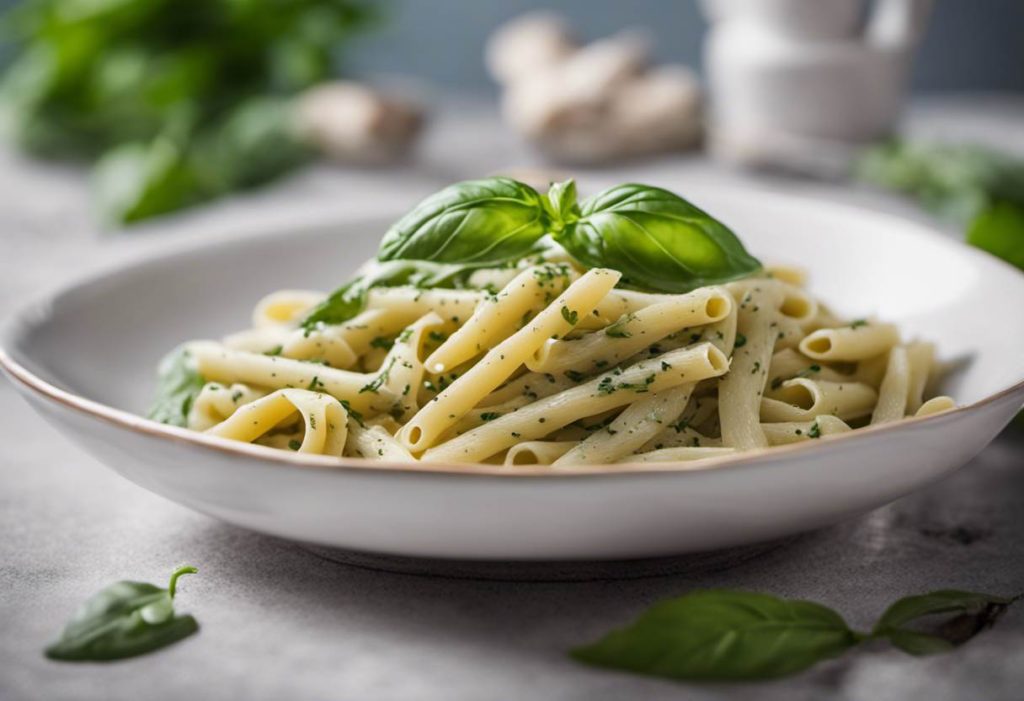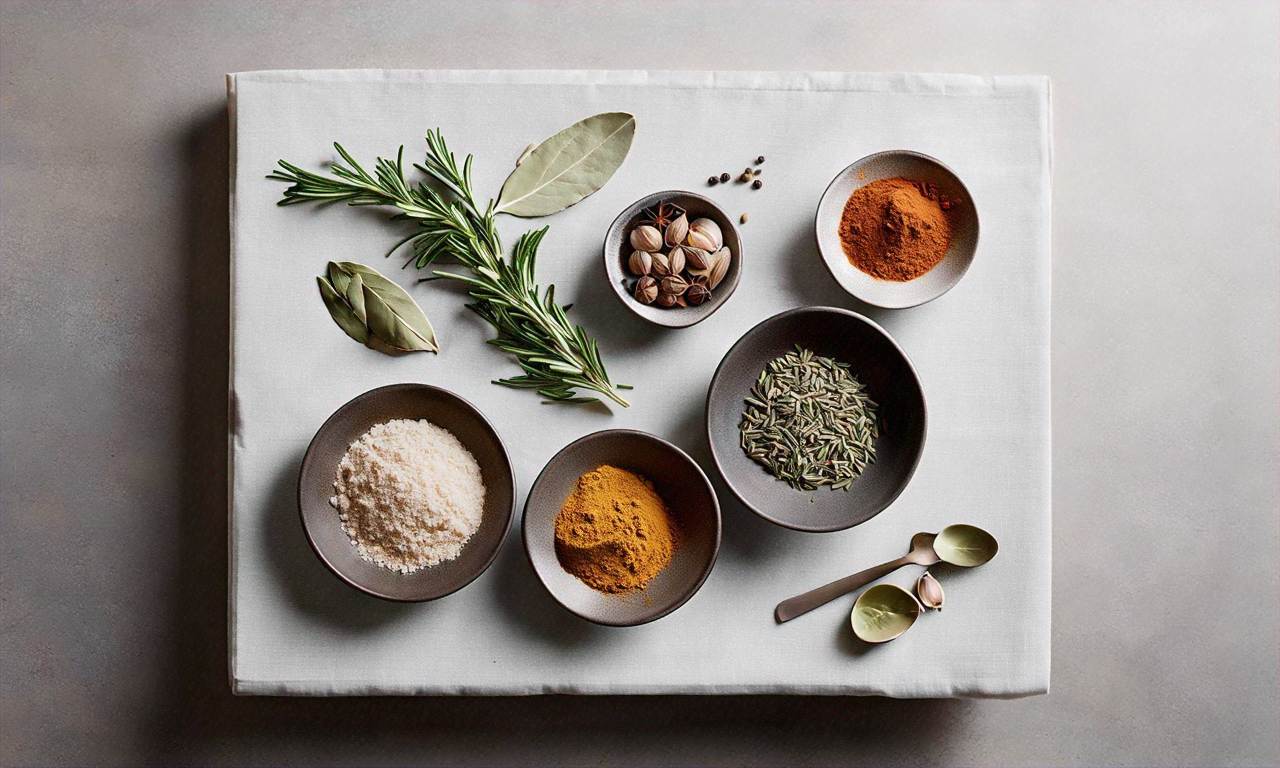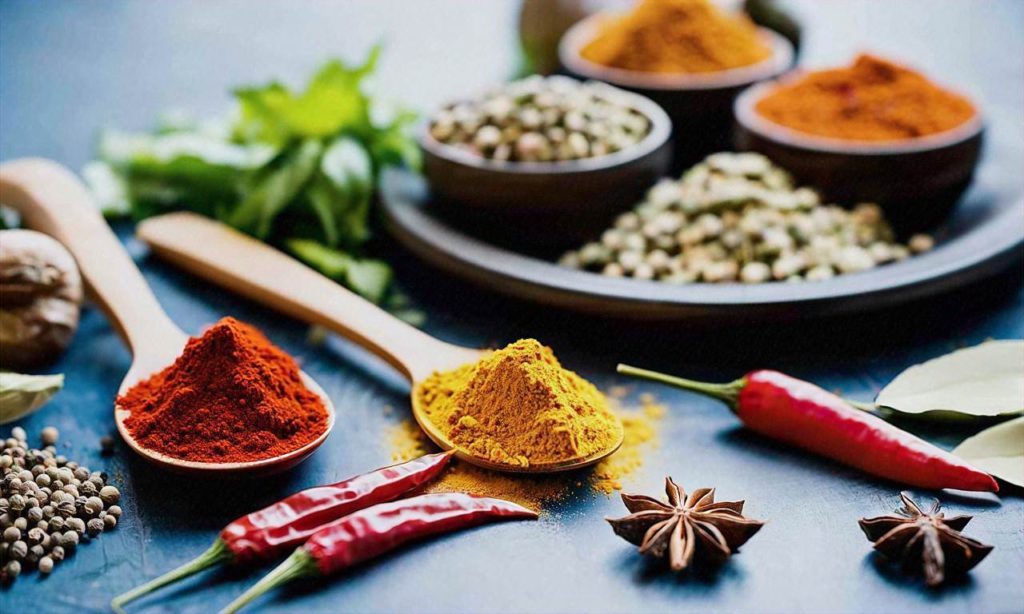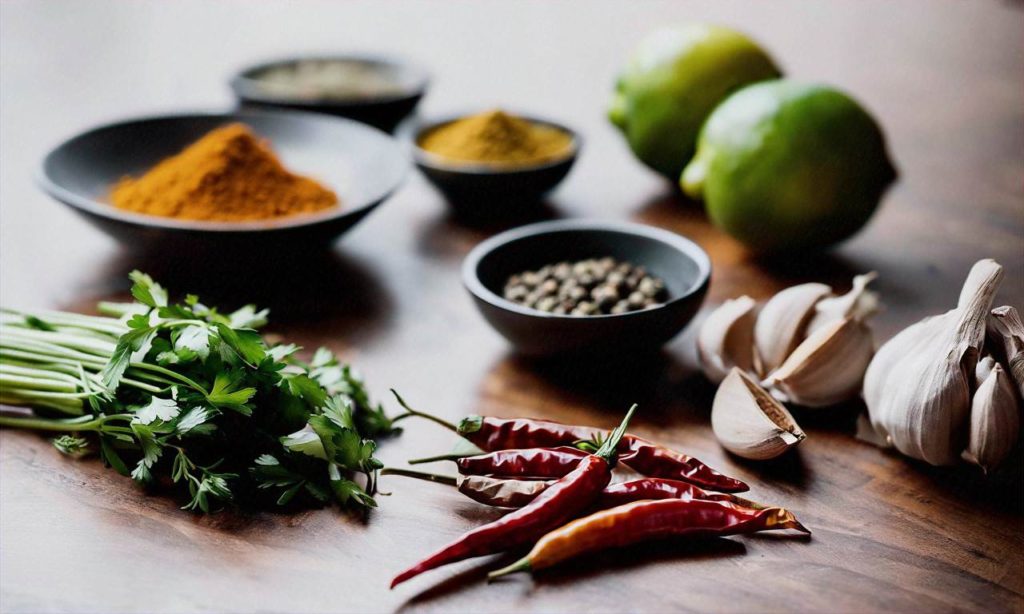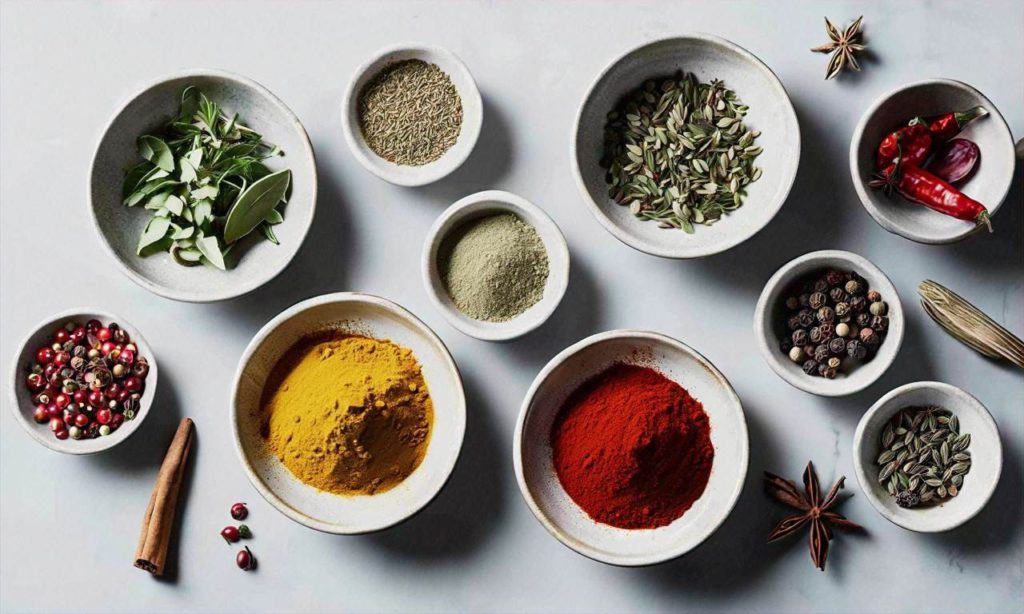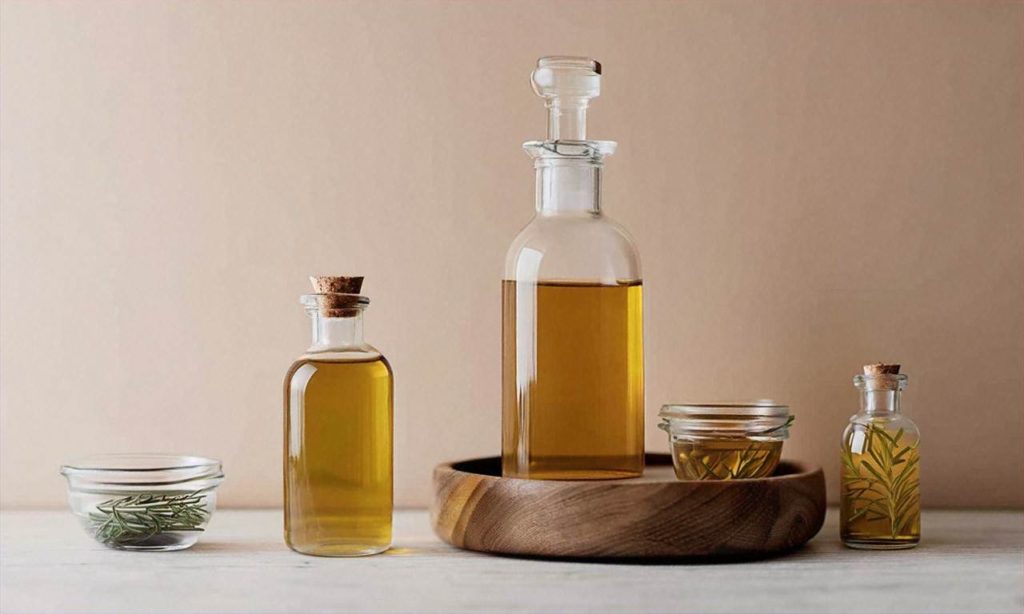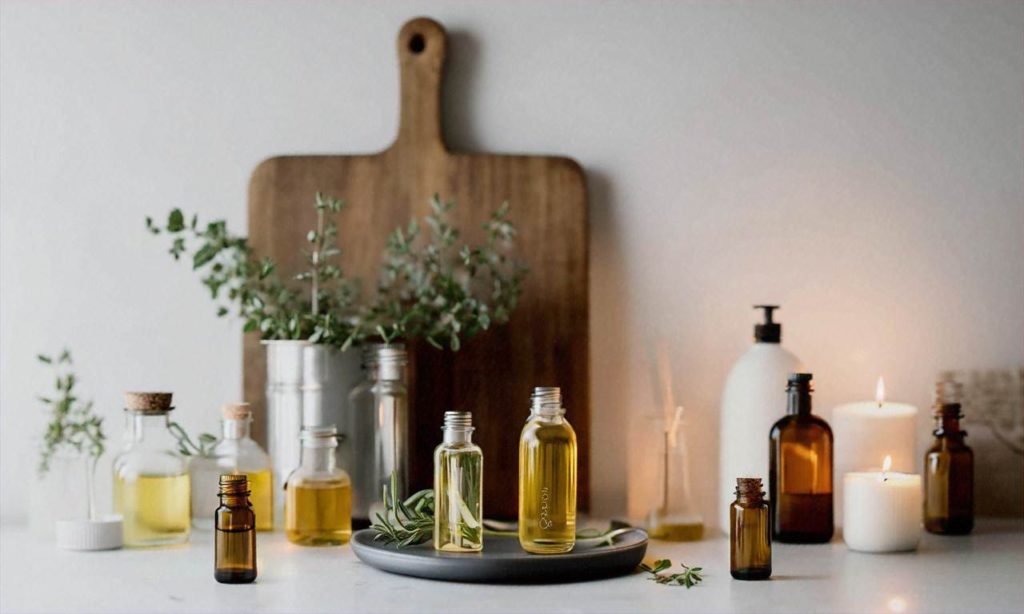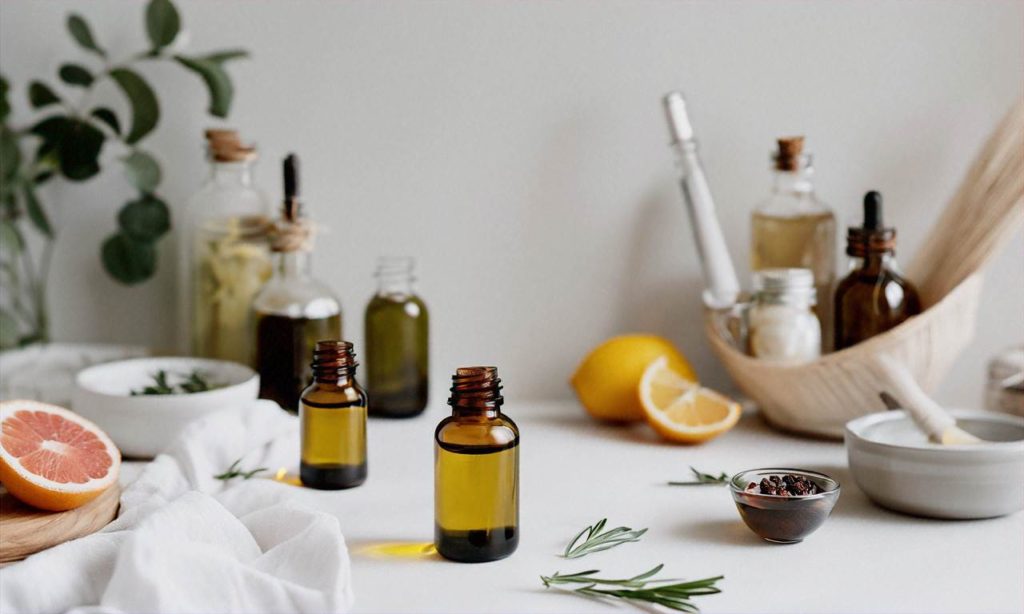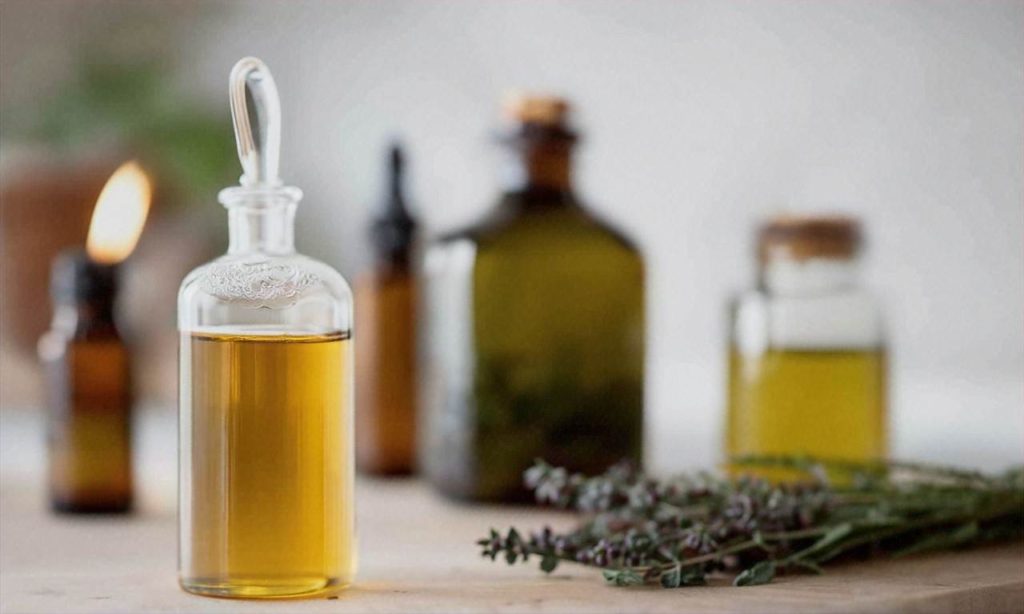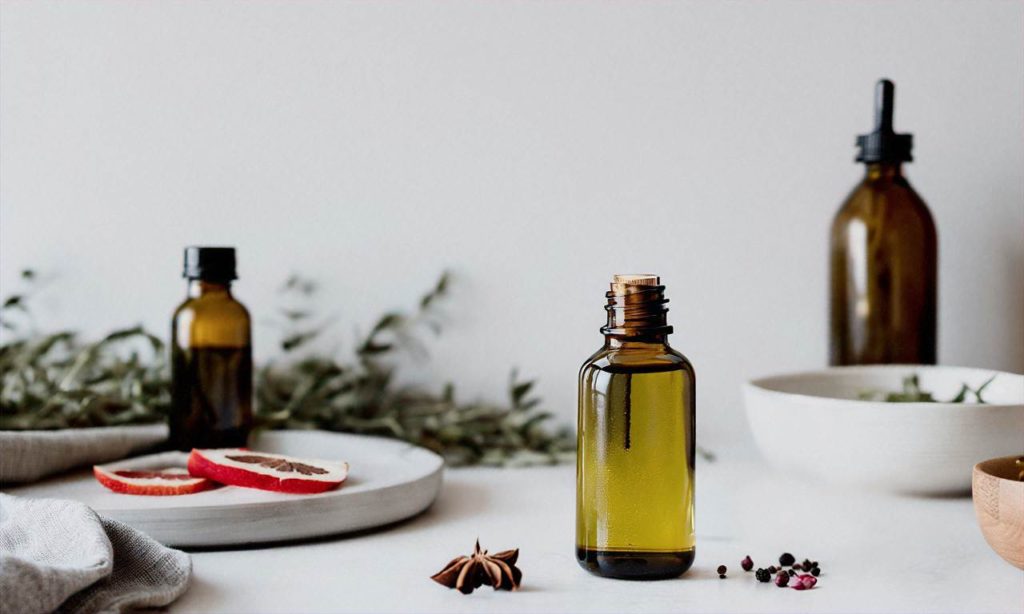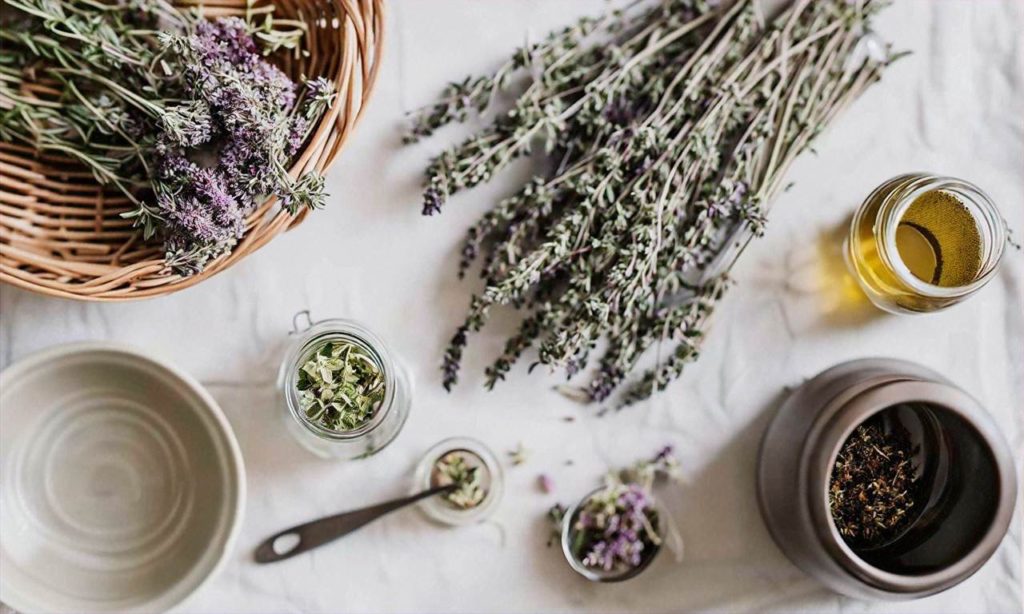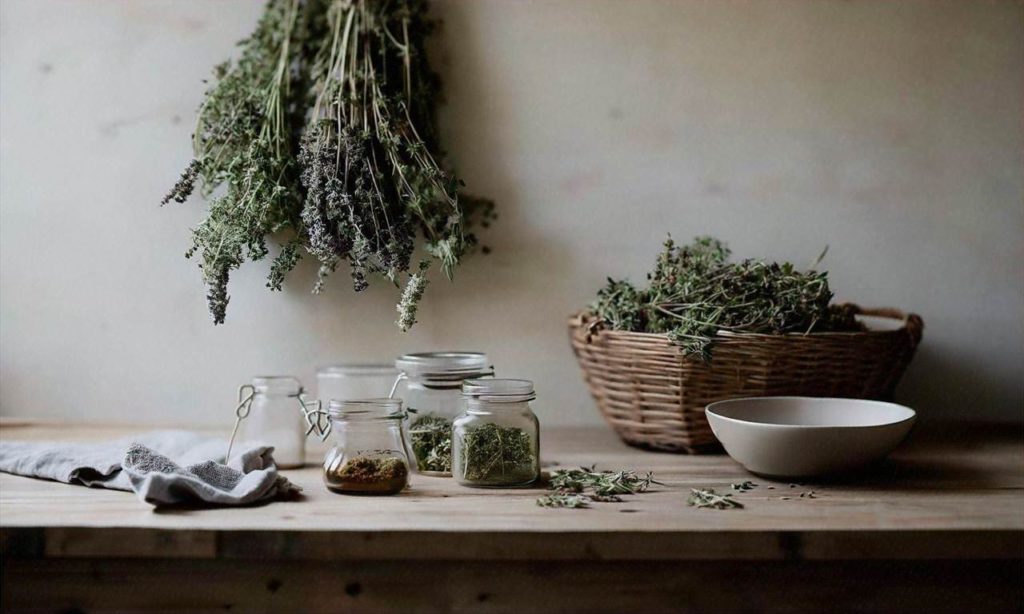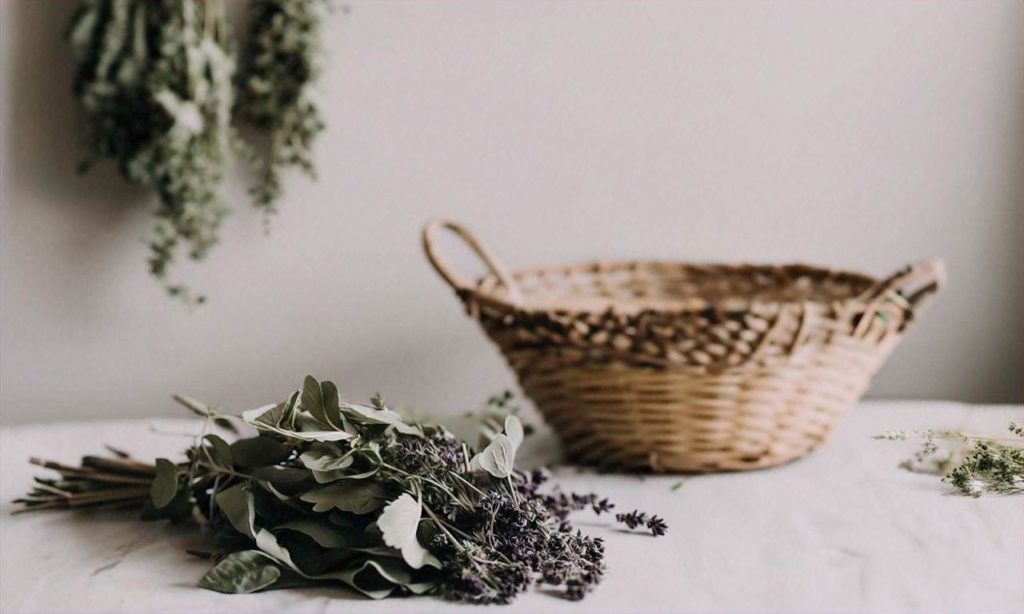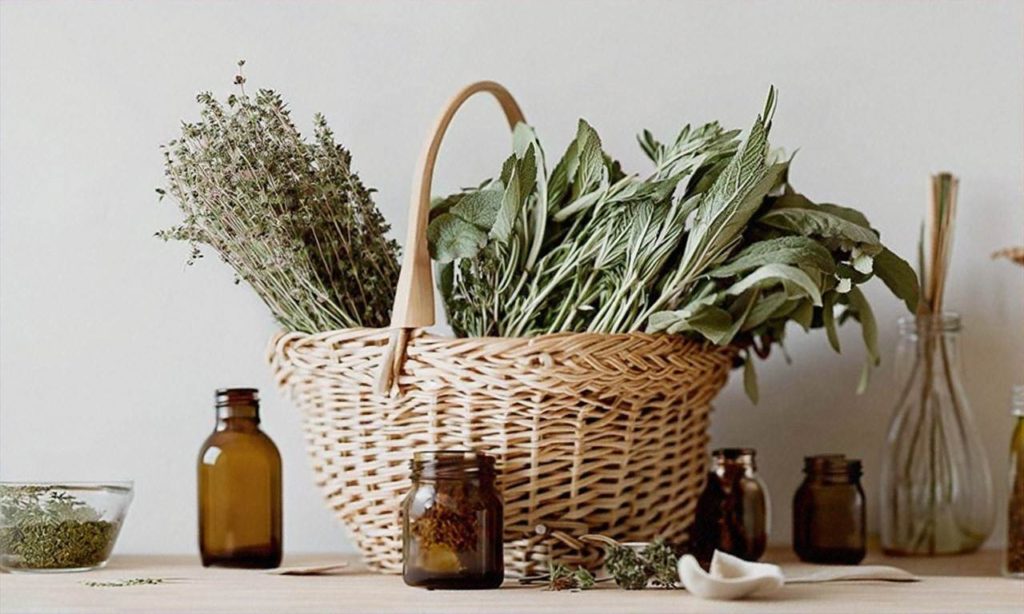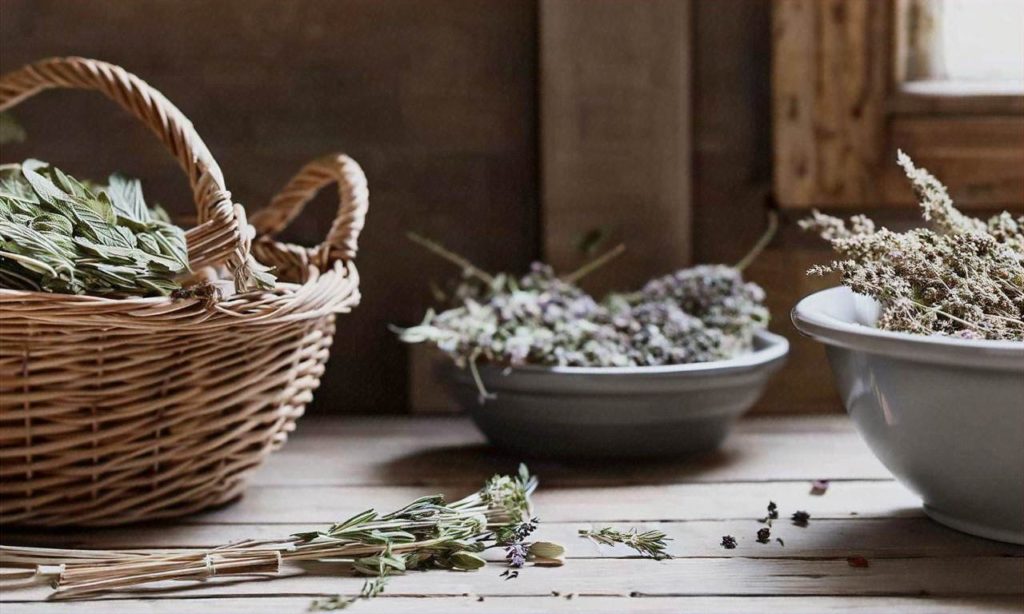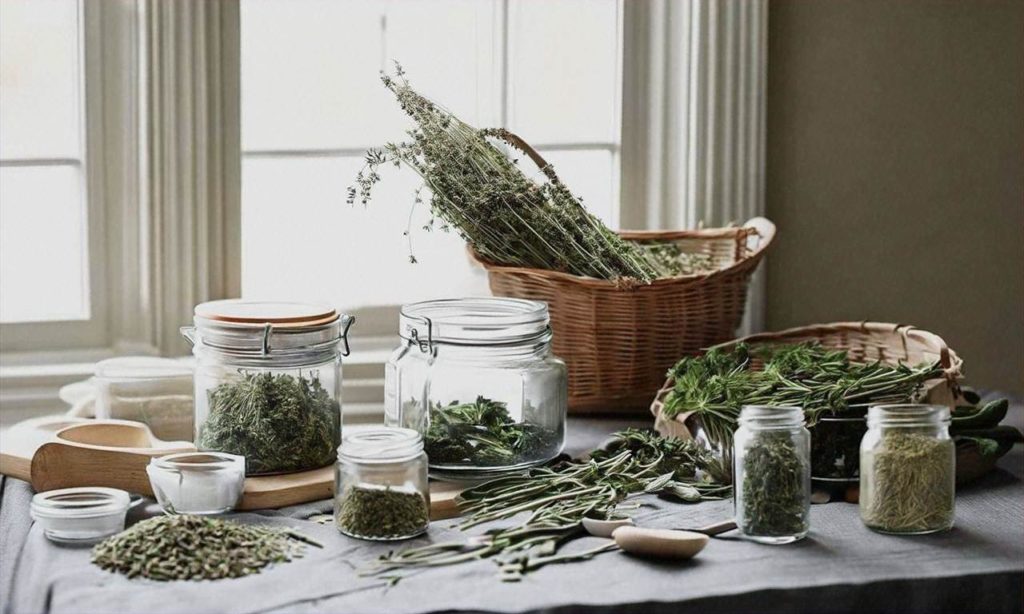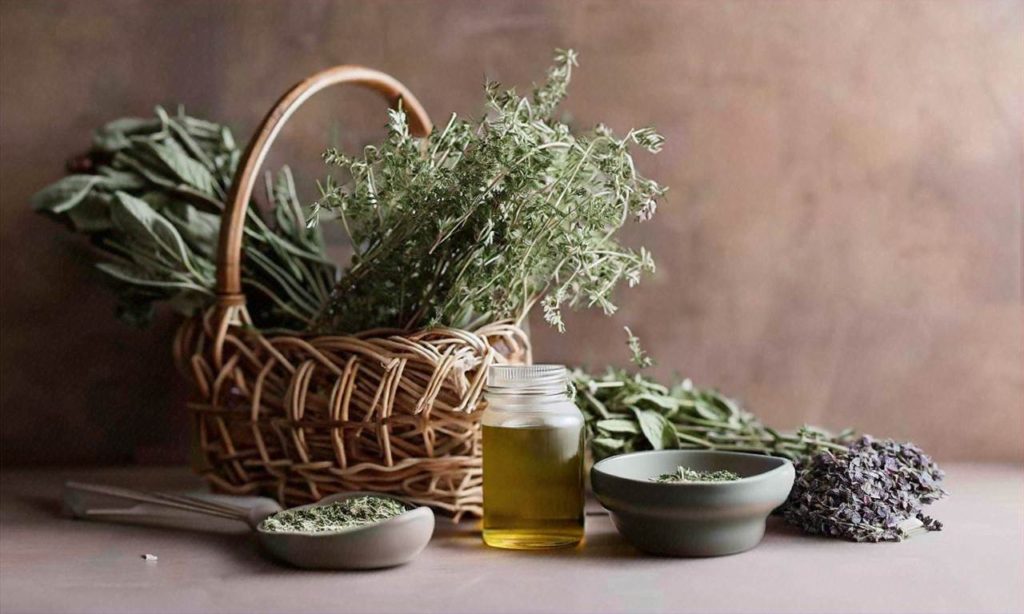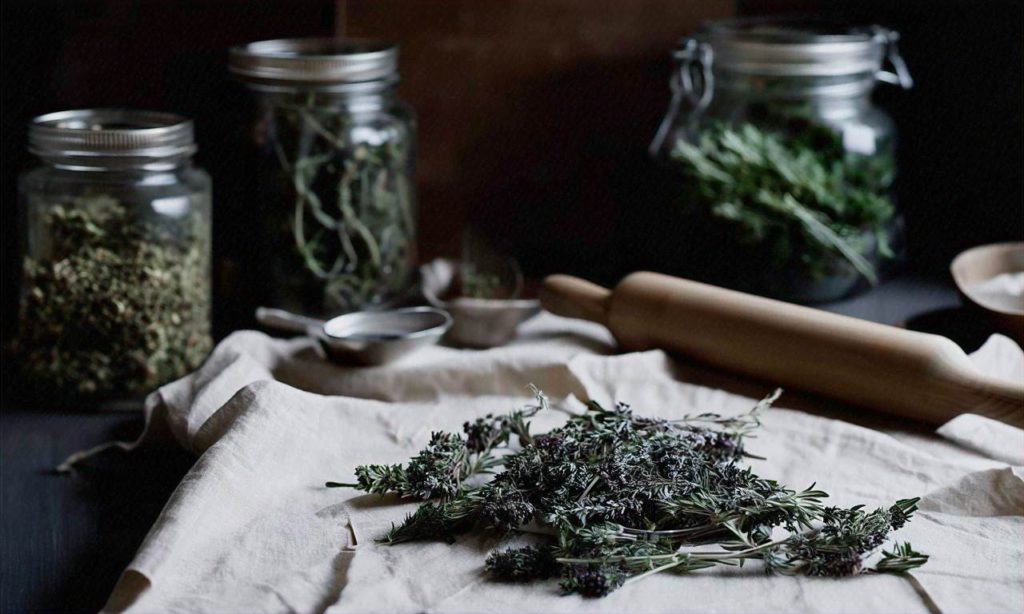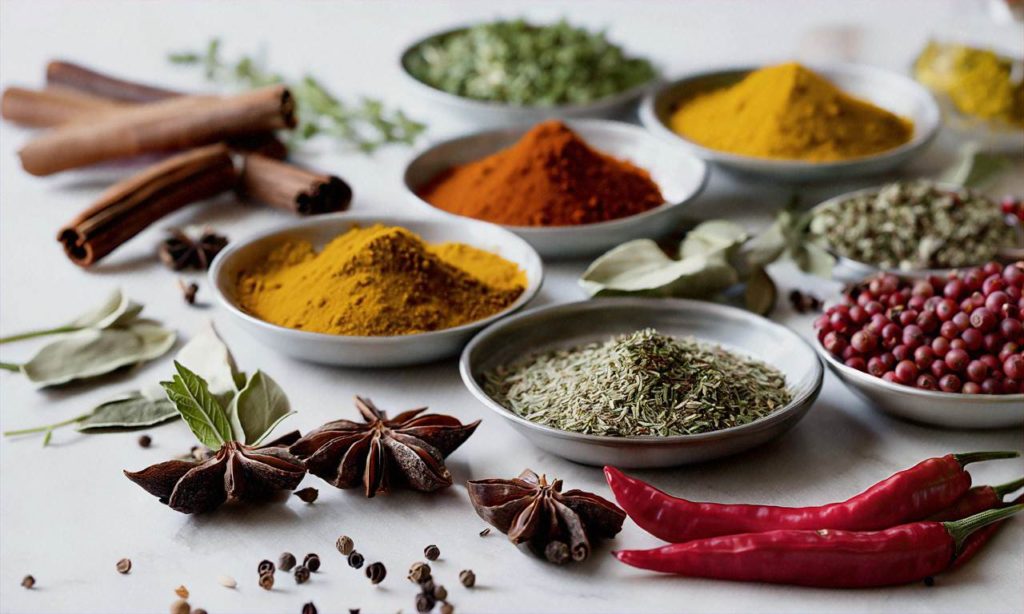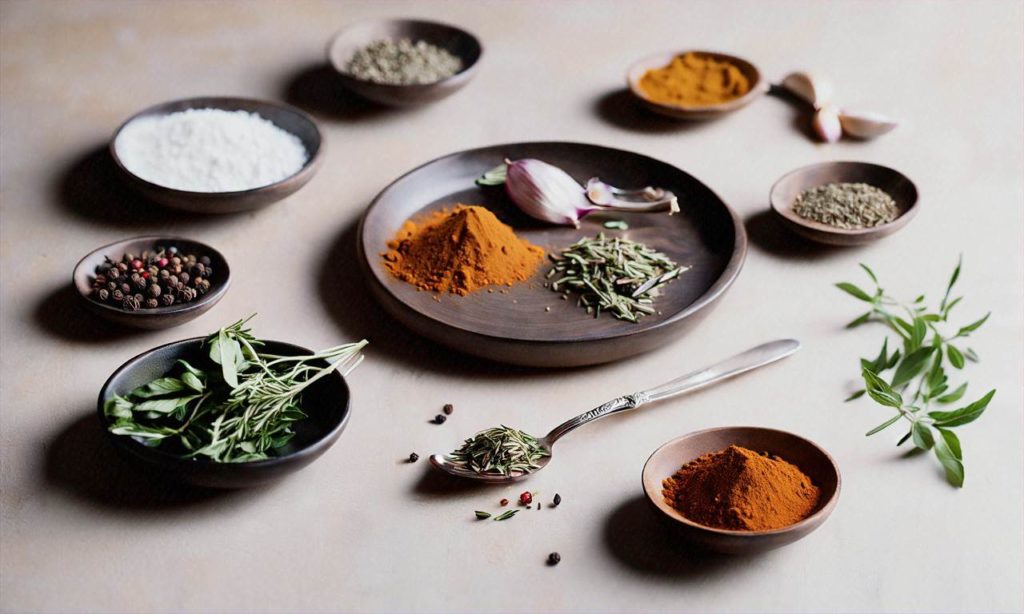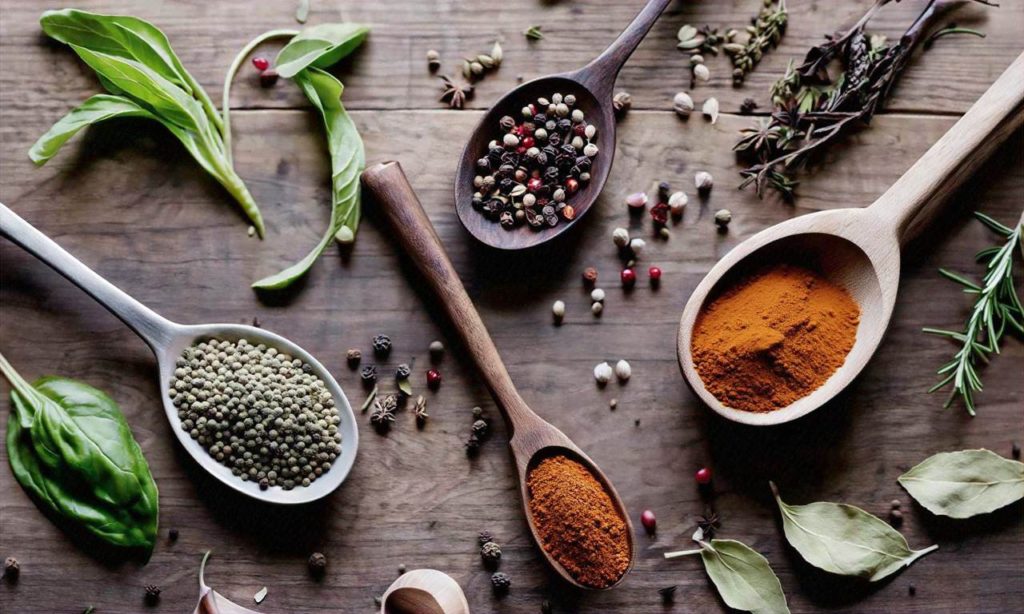The Basics of Cooking with Spices
Cooking with Spices: Tips for Balancing Flavors – The Basics of Cooking with Spices
Spices add incredible depth, aroma, and flavor to dishes from cuisines all over the world. Learning how to cook with spices opens up many possibilities in the kitchen. When used properly, spices can transform the flavor of vegetables, grains, proteins and more. However, it’s important to understand the basics of cooking with spices to create balanced, harmonious flavors. This article on cooking with spices will cover tips for balancing strong spices, spice pairings, using spices to enhance foods, and more.
What are spices? Spices come from the roots, seeds, fruit, bark or vegetative parts of plants. Common spices used in cooking include cinnamon, cumin, curry powder, ginger and turmeric. Herbs come from the leafy, green parts of plants, like basil, oregano and rosemary. When learning how to cook with spices, it helps to understand their unique flavors and aromas.
Why use spices in cooking? Spices add incredible aroma, flavor, color and texture to foods. Different spice blends characterize the cuisines from India, Thailand, Mexico and other parts of the world. Specific spices complement ingredients like tomatoes, chicken, lentils and fish. With the right balance, spices make dishes more interesting and satisfying to eat. They also provide antioxidants and anti-inflammatory compounds that offer potential health benefits.
Start with small amounts: Learning how to balance spices takes experimentation. When using a new spice, start with a small amount, taste and adjust. It’s easier to add more spice than taking it out once it’s overwhelming. Toasting whole spices briefly before grinding them releases their essential oils and intensifies their flavor. However, spices can burn quickly, so watch them closely on the stove.
Consider combinations: Many signature spice blends build layers of flavor with different spices. Garam masala contains cumin, coriander, cardamom, cinnamon, cloves and black pepper. By combining spices, complex and well-balanced flavors emerge. Cooking with spices is about discovering combinations that complement each other. Regional cuisines provide inspiration for blending spices in new ways.
Mind the heat: Some spices like cayenne, chili powder, mustard and black pepper add heat to dishes along with flavor. Keep in mind your own and your guests’ tolerance for spicy food. Balance hot spices by combining them with cooling spices like cinnamon, cumin, and turmeric. Adding a fat like olive oil or coconut milk also helps temper heat. Start with small amounts of hot spices and allow guests to add more at the table.
Toast whole spices: Toasting briefly intensifies the aroma and flavor of many whole spices like cumin seeds, coriander seeds, mustard seeds and fennel seeds. Heat a dry skillet and add the whole spices, tossing frequently. Once fragrant and slightly darkened, after just 1-2 minutes, remove them from the heat so they don’t burn. Then grind the toasted spices and add to your dish. Their aroma and flavor will be beautifully heightened.
Store spices properly: To retain flavor and potency, store spices in airtight containers away from heat, moisture and direct sunlight. Replace them every year or two as their volatile oils dissipate over time. Try labeling containers with purchase dates and rotate older spices to the front to ensure freshness. Investing in fresh, quality spices makes a remarkable difference in cooking with spices.
We hope these basics give you confidence in exploring spices! The keys are using them judiciously, finding complementary combinations and balancing flavors. Well-used spices make food more satisfying, interesting and enjoyable to eat. This introduction covered why to use spices, getting started with amounts and combinations, managing heat, toasting whole spices and proper storage. Read on to discover more tips, pairings and techniques for cooking with spices and balancing flavors.
Common Spice Pairings and How to Use Them
Certain spices just seem to go hand-in-hand in the kitchen. Learning some of the most popular tried-and-true spice pairings can help guide you when experimenting with spice blends or adding spices to recipes. Understanding what makes specific spices complement each other so well can also give you the confidence to move beyond basic pairings and discover new flavor combinations.
Some classic pairings like garlic and basil or cinnamon and allspice reflect the spices’ shared place of origin and history of being used together in established cuisines. Other go-to combinations like chili powder and cumin or ginger and turmeric unite spices with similar flavor profiles. Contrasting but balancing combinations like rosemary and lemon or cumin and mint play complementary spices against each other for more complex flavors.
Getting the basics down of some of the most ubiquitous spice pairings used in cooking and knowing how to use them provides a strong foundation for endless recipe experimentation and innovation when cooking with spices.
Garlic and Basil
This dynamic Mediterranean herb and spice duo stars together in everything from pasta sauce to pesto to pizza. The pungent bite of garlic balances beautifully with the sweet, gently peppery flavor of basil. Use them together abundantly in tomato-based pasta sauces, savory Mediterranean vegetable dishes like ratatouille, fresh pestos and herb spreads, and as pizza toppings.
Cinnamon and Allspice
Warming allspice echoes the sweet-spicy flavor of cinnamon for a pairing that evokes baking spices. They taste fantastic together in baked goods like pies, cakes, cookies, and quick breads as well as in spice rubs for roasted vegetables, meats, and tofu. Add them together along with ginger and clove for ultimate apple and pumpkin pie spice blends.
Chili Powder and Cumin
This dynamic Tex-Mex duo adds smoky, savory depth. Chili powder contributes mild heat while earthy cumin balances with its distinctive nutty, slightly bitter flavor. They’re essential ingredients together in chili con carne, tacos seasonings, enchilada sauce, fajitas, and more Tex-Mex classics. Sprinkle them liberally on meats and veggies before grilling or roasting too.
Ginger and Turmeric
Ginger’s warming bite and subtle citrusy sweetness beautifully complements the earthy, bitter, slightly mustardy flavor of turmeric. They feature prominently together in Indian and Southeast Asian cuisines. Use them as a base for from-scratch curry powder or garam masala blends. Or add them together along with other spices like cumin and coriander to flavor curries, lentil dals, rice dishes, marinades, and stir fries.
Rosemary and Lemon
Herby rosemary’s piney bite plays perfectly against tart, bright lemon. They give chicken, fish, veggies, and even desserts a fresh Mediterranean flavor. Use them together abundantly for roasted lemon chicken or fish, lemon rosemary oven potatoes, mixed roast veggies, and lemon rosemary cookies or cake.
Cumin and Mint
Cooling mint balances the intense earthy, bitter, almost lemony flavor of cumin. This Middle Eastern pairing adds intrigue to spice rubs, marinades, grain salads like tabbouleh, yogurt dips, and more. Use ground cumin and fresh mint liberally together to season lamb, lentil and bean dishes, grains, and vegetables.
Experimenting with some of these tried-and-true spice pairings together in your own recipes is a great way to start comfortably exploring cooking with spices. Once you understand how certain spices complement each other so perfectly, you can begin branching out and discovering more unusual but still harmonious flavor combinations. With the endless variety of spices available today, there’s no limit to innovative pairings and captivating new spice blend ideas to uncover when cooking with spices.
Tips for Balancing Strong Spices
Strong spices like chili peppers, ginger, garlic, and curry can add immense flavor to dishes when used properly. However, it’s easy to overdo it with potent spices, resulting in a dish that is too spicy or intensely flavored to enjoy. With some careful tips and techniques, you can balance strong spice flavors to make harmonious and complex dishes.
Assess Your Spice Tolerance
Before cooking with strong spices like chili peppers, consider your own tolerance for spice as well as who you are cooking for. If you or your guests don’t enjoy very spicy food, use smaller amounts of hot peppers or milder varieties. You can always add more spice later if needed.
Start with Small Amounts
It’s easier to add more spice than take it out of a dish, so begin by adding small amounts of potent spices. Start with just a pinch of cayenne or half a minced chili pepper before adjusting to taste. You can build depth of flavor without overwhelming heat this way.
Bloom Spices in Oil or Liquid
Blooming spices like garlic, ginger, or curry powder in oil or liquid helps mellow their raw edge. Cook briefly in oil or broth before adding other ingredients. This smooths and rounds out the flavor.
Balance Heat with Acid and Sweet
Contrast spicy heat with acid from citrus juice or vinegar and sweetness from tomatoes, carrots, coconut milk, or a touch of sugar. The interplay of flavors makes both the heat and the contrasting notes more vibrant.
Soak Dried Chilies Before Using
For very hot dried chilies like arbol or pequín peppers, soaking them in hot water for 10-30 minutes helps extract some of the fieriness. Use the soaking liquid for a milder heat level.
Use Herbs and Spices Together
Pair hot spices with fresh herbs like cilantro, mint, basil, or parsley. The bright, cooling flavors balance out heat. Spices like cumin, coriander, and fennel also mitigate heat.
Add Dairy to Tame Spiciness
Ingredients like yogurt, cream, and coconut milk have a cooling effect on spicy dishes. Stir in a spoonful or two near the end for a mellower flavor. Cheese can also help cut spice intensity.
Adjust Serving Sizes Mindfully
When working with very hot peppers like habaneros or ghost peppers, remember that a little goes a long way. Adjust serving sizes to just 1-2 tablespoons of a sauce or one small pepper in a large pot of soup or stew.
Let Flavors Develop Over Time
The intensity of some spices mellows the longer they cook. If a dish tastes too spicy at first, let it sit for 5-10 minutes for flavors to meld before adjusting. Time often balances bold flavors.
Taste and Adjust Carefully
Be sure to taste as you season, and resist overcompensating with more salt or acid when heat is high. Focus on rounding out flavors with sweet, creamy, or herbaceous notes instead. Careful tweaking and time will result in balanced spice.
With a few simple techniques for blooming, soaking, pairing, and adjusting spice amounts, you can create dishes with layered, nuanced heat. Paying attention to spice tolerance levels and carefully tweaking flavors as food cooks will help you master the art of balancing strong spices.
Complementary Spices for Different Cuisines
Certain spice combinations just seem to go hand-in-hand with specific cuisines around the world. Learning some of these classic pairings can help home cooks easily infuse authentic and balanced flavors into dishes. When cooking with spices for various world cuisines, consider the following complementary blends:
Italian Cuisine
Some of the most popular spices used in Italian cooking include basil, oregano, rosemary, sage, garlic, onion, red pepper flakes, fennel, and parsley. These herbs and spices complement tomato-based pasta sauces, risottos, roasted vegetables, focaccia breads, and more. Try mixing fresh chopped basil, oregano, crushed red pepper and garlic for a zesty pizza sauce. Or add chopped rosemary and garlic when roasting potatoes or making focaccia bread.
Indian Cuisine
Indian food balances warming spices like cumin, turmeric, cinnamon, cardamom, clove, ginger and black pepper with cooling spices like coriander, fenugreek, fennel and mint. Common spice blends like garam masala and tandoori masala also feature these spices. To make a basic garam masala, try mixing cumin, coriander, cardamom, cinnamon, black pepper and clove. This blend nicely complements curries, lentils and vegetable dishes.
Mexican Cuisine
The base of many Mexican spice blends includes garlic, onion, oregano, cumin and chili peppers. Add corn, cilantro, lime and cacao to round out distinctive flavors. Mix cumin, oregano, garlic and chili powder for tacos al pastor. For rich mole sauces, try blending ancho chilies, cinnamon, cloves, cumin and cacao powder. Brighten enchiladas with cumin, garlic and lime zest in the sauce.
Chinese Cuisine
Chinese five spice powder typically contains Sichuan pepper, clove, cinnamon, fennel and star anise. This blend nicely complements roast meats, stir fries and noodle dishes. Garlic, ginger and scallions are also popular. For a homemade five spice blend, combine 2 teaspoons each of the five spices. Start with 1⁄4 teaspoon of this blend for 1 pound of meat or vegetables and adjust to taste.
Thai Cuisine
Lemongrass, lime, basil, cilantro, garlic, galangal and chili peppers are hallmarks of Thai food. For red or green curry paste, blend some combination of these ingredients with shallots, ginger and spices like coriander, cumin and turmeric. The balance of hot, sour, salty and sweet flavors helps make Thai food so craveable. Add freshly squeezed lime and a sprinkle of crushed red pepper flakes to your pad Thai or Thai basil chicken.
Mediterranean Cuisine
Mediterranean spice blends vary across the region but often include garlic, oregano, parsley, basil, cumin, cinnamon, allspice, mint and lemon. Mix garlic, lemon zest, oregano and olive oil for an easy marinade base for proteins. Or blend cinnamon, cumin and parsley into ground lamb before making kebabs or meatballs. Bright parsley, mint and lemon nicely balance the richness of foods cooked in olive oil.
Cajun & Creole Cuisine

The robust and eclectic flavors of New Orleans and Cajun cooking come from the influence of French, Spanish, Italian, German, West African and Native American cuisines over hundreds of years. Core spices include garlic, black pepper, thyme, oregano, cayenne pepper, paprika and filé powder made from ground sassafras leaves. This cuisine also makes abundant use of onions, bell peppers, celery and tomatoes. Start with the classic “holy trinity” of onions, celery and bell peppers when making jambalaya, gumbo or crawfish étouffée.
The world of spices offers endless flavor combinations unique to various cuisines. But no matter the cuisine, balancing the flavors and aromas of spices is key for the most delectable dishes. Follow some of the basic complementary spice guidelines for different world cuisines covered here. Then have fun experimenting with adjusting amounts or trying new spice blends in your cooking with spices!
Using Spices to Enhance Specific Foods
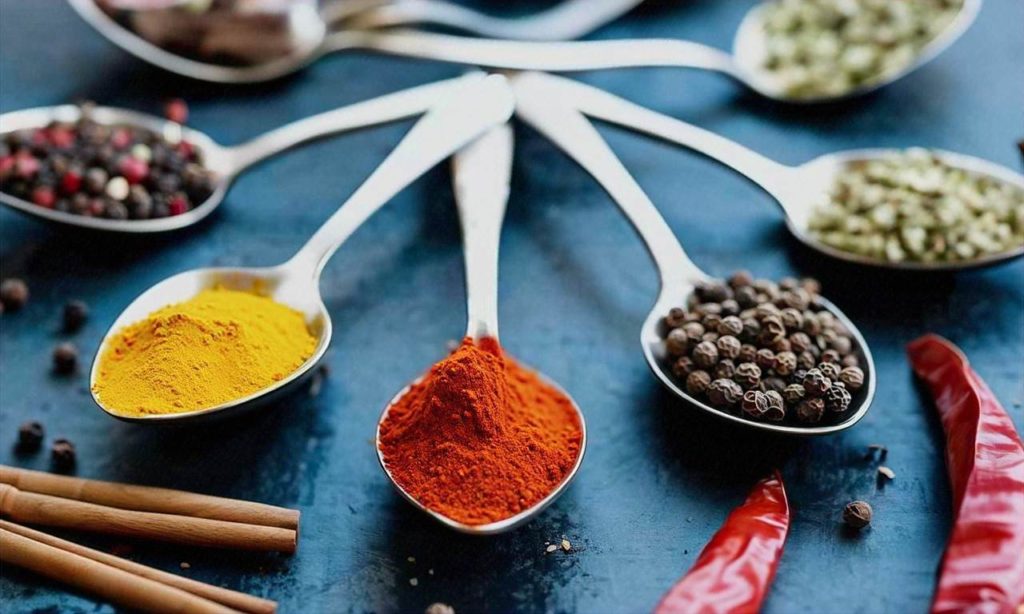
Spices can transform the flavor of many foods. By using spices purposefully, you can bring out the best qualities of ingredients and make dishes more complex and delicious. Here are some tips for enhancing specific foods with spices.
Meat
Spices are very effective at bringing out the rich, savory flavor of red meats like beef, pork, and lamb. For beef, classic spice blends like Montreal steak seasoning add lots of umami flavor. Dry rubs made with spices like black pepper, paprika, garlic powder and onion powder are also excellent on grilled meats. Lamb goes well with warming spices like cumin, cinnamon, cayenne, and cloves. Pork pairs nicely with sweet spices like ginger, nutmeg, allspice and brown sugar.
Seafood
The delicate flavor of fish and shellfish gains depth from herbs and spices. Old Bay seasoning, with its blend of mustard, paprika, celery salt and other spices, is a popular choice for seafood. Lemon and parsley brighten up the flavor of fish and shrimp. Cajun blackening spice mixes also work well to give seafood extra kick. Avoid strong spices that will overpower more subtle seafood flavors.
Poultry
Poultry benefits from a wide range of spices that enhance its versatility. Chicken stands up well to bolder spices like garlic, cumin, thyme, rosemary and sage. For Thanksgiving turkey, poultry seasoning with thyme, sage, marjoram and nutmeg is the perfect blend. Indian-style tandoori chicken uses spices like cayenne, cinnamon, cumin and garlic to make the meat flavorful. Lighter spices like lemon and parsley taste refreshing with poultry.
Vegetables
Spices can make vegetables more crave-worthy. Roasting vegetables brings out their natural sweetness, which pairs well with spices like cumin, paprika, garlic and onion powder. Add chili powder, cayenne or crushed red pepper to turn up the heat. Italian herb blends give depth of flavor to eggplants, squash, peppers and more. For richness, add warming spices like cinnamon and nutmeg to cooked vegetables. Even just salt, pepper and lemon can make vegetables pop.
Legumes and Grains
Beans, lentils and whole grains tend to have earthier, nuttier flavors that combine nicely with bold spice blends. Cumin is commonly paired with chickpeas in curries and stews. For lentils and beans, add smoky paprika or flavorful garam masala. Biryani or pilaf rice dishes use fragrant spices like cardamom, cloves and cinnamon. To finish whole grains like farro or quinoa, stir in fresh herbs, lemon zest, or a drizzle of chili crisp sauce.
Baked Goods and Desserts
Both sweet and savory spices enhance baked goods. Ginger, cinnamon, nutmeg and cloves add comforting warmth to cookies, cakes and pies. Anise and fennel bring out subtle licorice notes in pastries and other desserts. Savory baked goods like breads, biscuits and scones taste great with herbs like rosemary, thyme and oregano baked right in. Add a pinch of cayenne to chocolate desserts for a kick. Finish off baked goods with a dusting of cinnamon sugar or cumin salt.
Eggs
Even simple scrambled or fried eggs become more exciting with spices. Add a pinch of turmeric or saffron to make colorful, flavorful scrambled eggs. Stir chopped herbs like chives, dill or parsley into egg salad. For a spicy kick, add cayenne, paprika or chili flakes to omelets and frittatas. Whip up curry-spiced deviled eggs. Shakshuka is a classic Middle Eastern dish of eggs poached in a tomato sauce spiced with cumin, paprika and cayenne.
No matter what you’re cooking, there is likely a spice blend to make it shine. Keep your pantry stocked with a variety of dried herbs and spices so you’re ready to add flavor to everyday dishes. Don’t be afraid to experiment with new spice combinations too. With just a dash of this or a pinch of that, you can take your cooking to bold new heights.
Spice Storage Tips
Properly storing spices is key to preserving their freshness and flavor. Here are some tips for keeping your spices in peak condition for all your cooking with spices endeavors.
Buy Spices Whole
Purchasing spices whole, rather than pre-ground, can help them retain aroma and flavor longer. Whole spices have natural oils that when left intact, act as a protectant from elements that cause spices to lose potency. Try grinding or crushing small batches of spices as needed so they stay fresh.
Store Spices in Airtight Containers
Whether you buy pre-ground or whole spice, be sure to transfer them from packaging into airtight glass, metal, or ceramic containers. Air exposure causes oxidation which makes spices go stale faster. Clear glass jars allow you to easily identify contents. For extra protection, keep containers in a cool, dark space like a cupboard.
Keep Away From Heat, Light, and Moisture
Heat, light, and moisture are enemies to fresh, vibrant spices and can speed up oxidation. Avoid storing spices near heat sources like the stove, oven, or toaster. Choose a space not exposed to direct sunlight. Make sure storage areas are free from steam and condensation. Controlling temperature and humidity helps spices maintain volatile oils.
Practice First-In, First-Out
When cooking with spices, use a first-in, first-out system when possible. Move older product to the front of your pantry or spice rack. Use spices that have been sitting the longest first, then newest additions last. This method helps you get through inventory before peak flavor dissipates. Date jars when contents are purchased or opened.
Freeze Spices for Long-Term Storage
Freezing select ground spices prolongs freshness beyond typical pantry storage. Good freezer candidates include oregano, basil, thyme, rosemary, marjoram, and sage. Simply spoon spices into an ice cube tray, cover with water or oil, and freeze. Pop cubes into airtight freezer bags. Frozen cubes provide flavor as they thaw during cooking.
Keep Inventory and Restock
Do a periodic spice inventory, checking for stale, lackluster flavors. If you notice a decline, replace those items with fresh spices. Try not to hoard large quantities of any one spice. For the best flavored cooking with spices, buy smaller amounts more frequently to prevent overload of any spice that could lose potency before use.
Know When It’s Time to Toss and Replace
Unfortunately, spices don’t last forever. If you notice dull color, weakened aroma, altered texture, diminished flavor impact, or any signs of moisture or mold, it’s time to compost. As a general rule, toss ground spices after 1-2 years. Whole spices can hold flavor potency slightly longer at 3-4 years max. Regardless of form, replace any spice that just doesn’t seem vibrant.
Implementing a few fundamental spice storage strategies can make all the difference in lifting your cuisine with intensely flavored, perfectly balanced spices. Follow these spice care tips for delicious cooking with spices recipes your family and friends will love.
Buying Quality Spices
Finding high-quality spices can make all the difference in your cooking. The intensity of flavor, aroma, and color that spices impart depends greatly on their freshness and proper storage and handling before purchase. Here are some tips for selecting and buying spices that will enhance your dishes.
Know Where to Shop
The best places to buy spices are specialty spice shops, ethnic markets, and the spice section of higher-end or gourmet grocery stores. These retailers are more likely to have high turnover of inventory and staff knowledgeable about the spices. Chain supermarkets often have lower spice quality since the product may sit longer on shelves.
Assess Dry Spices Carefully
When buying dry spices like cumin, turmeric, or oregano, check manufacturing or expiration dates and choose the freshest option. Give any spice container a sniff test – you should be greeted with an intense aroma when you open the lid, not a faint dusty scent. And inspect the color of the powder or seeds/leaves – they should not be dull but rather vivid.
Evaluate Whole Spices
For whole spices like peppercorns, cinnamon sticks, cardamom pods, or bay leaves, examine size, color and aroma. Peppercorns should be uniform in size without lots of broken bits. Cinnamon and bay leaves should have good color without many blemishes. Cardamom pods should not look dried out or have loose seeds. And all whole spices should release fragrance when gently pressed.
Understand Ideal Storage
It’s also essential to consider how spices were stored before you bought them. Humidity, heat, and light all degrade spices quickly. For maximum freshness, spices should be kept in airtight containers away from heat, moisture and sunlight. When shopping, choose spices displayed in tightly sealed containers in a cooler, darker part of the store.
Ask Questions
Don’t hesitate to ask questions about spices when shopping at specialty stores. Inquire about turnover rates, storage methods, and popularity to help gauge freshness and quality. Ask when and where a spice was harvested or purchased. Good spice purveyors will be happy to share this information with interested customers.
Do Your Research
Particularly when shopping online, do some quick research on the spice seller before you buy. Check for any reviews, certifications, or sustainability standards that can help identify reputable spice sources. Or look for vendors specializing in spices and seasonings rather than general retailers.
Buy Smaller Quantities
Because spices lose potency over time, it’s best to buy spices in smaller quantities if you don’t use them frequently in your cooking. Unless you bake and cook often with cinnamon, for instance, a large bottle may lose its flavor before you use it all. Consider your usage amount and frequency when choosing spice quantities.
Determine Fair Pricing
Spices can range hugely in price because of factors like quality, rarity, origin, and processing method. Consider fair pricing for both your budget and the quality level you seek. Very cheap spices are likely old, mixed with fillers, or lower grade. But the most expensive may not be necessary for home cooking. Aim for good value for high-quality spices best suited to your recipes rather than either extreme.
Trust Your Senses
Your senses of smell, taste and sight are the best tools for assessing spice quality. Rely on them when shopping to inspect spices and determine the true vibrancy that will enhance cooking. Let these buying quality spice tips guide you in selecting ingredients with optimal flavor and freshness.
Spice Substitutions
Knowing how to substitute spices in recipes can save a dish when you’re missing a key ingredient. While no substitute can perfectly replicate the flavor of the original spice, there are good alternatives you can use in a pinch. With some thoughtful spice substitutions, you can still achieve a beautifully balanced, flavorful meal.
Allspice
If you don’t have allspice, a blend of cinnamon, cloves, and nutmeg can mimic the sweet and slightly peppery flavor. Use 1/2 teaspoon of this spice blend for every teaspoon of allspice called for. Allspice is commonly used in recipes for gravies, stews, mulled wines and ciders, Middle Eastern dishes, jerk seasonings, and more.
Cinnamon
Cassia has a very similar flavor to true cinnamon and can generally be used interchangeably in recipes. If using cassia when a recipe calls for cinnamon, use a little less since cassia has a stronger, more intense flavor. Cinnamon is a warm, sweet spice used around the world in both savory and sweet dishes.
Cloves
Allspice, nutmeg, cinnamon and ginger all have subtle clove undertones. Use one of these spices sparingly as an emergency substitute if you don’t have cloves on hand. Cloves pair well with cinnamon, nutmeg, ginger and orange. They are used in spice blends, marinades, pickled and preserved foods, baked goods and more.
Cumin
Caraway seeds have an anise-like flavor similar to cumin. Use the same amount called for in the recipe. Chili powder and garam masala also work for some dishes. Cumin is essential for Mexican, Indian and Middle Eastern cuisine, used in everything from curries to tacos.
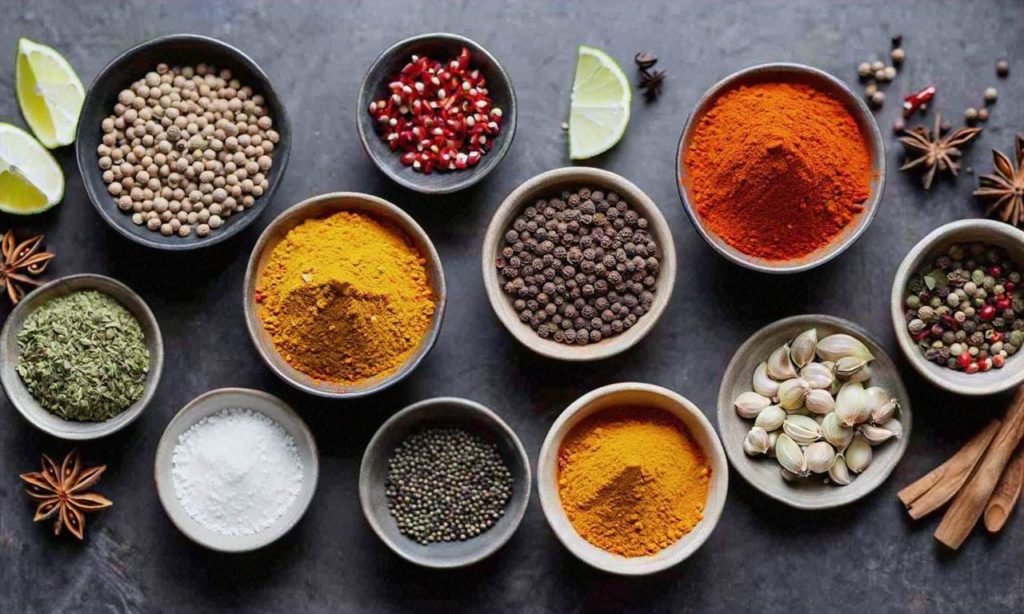
Curry Powder
Make your own quick curry blend by combining 2 teaspoons turmeric, 1 teaspoon each of ground coriander, ground cumin, ground ginger and ground cinnamon. Omit any ingredients you don’t have. Commercial curry powder already contains a mix of spices like these. Curry powder is used to flavor many Indian and Southeast Asian dishes.
Ginger
Ground allspice or cinnamon provide some of the warmth missing without ginger, while lemon juice can replicate some of the tartness. Minced radishes and galangal root also share similarities with fresh ginger. Ginger adds a bright, citrusy heat to both sweet and savory recipes.
Nutmeg
Substitute mace, allspice, cinnamon or cloves for nutmeg. Use small amounts, as these all have stronger flavors. Nutmeg is used frequently in sweets and baked goods, but also works well in cream-based savory dishes.
Paprika
Depending on the type called for in the recipe, you can substitute chili powder or cayenne pepper for the heat, and turmeric for the vibrant red-orange color. Paprika ranges from mild and sweet to hot and spicy. It brings a rich red color and pops of flavor to many dishes.
Saffron
Turmeric can provide a similar yellow color to dishes, while ingredients like annatto and carrot powder also work. Combine turmeric with ginger, nutmeg and cardamom to approximate the flavor. Saffron is known as one of the world’s most expensive spices thanks to the labor-intensive process of harvesting the fragile purple crocus flowers.
Star Anise
Crushed anise seeds bring a similar pronounced licorice flavor. Chinese five spice seasoning contains both star anise and anise seeds, and makes a handy substitute in a pinch. Star anise is most frequently used in Chinese and Vietnamese cooking.
Getting Creative with Spice Substitutions
Don’t be afraid to experiment with spice substitutions in your cooking. Start by considering spices that share flavor profiles – warming spices like cinnamon, cloves nutmeg and allspice can often stand in for one another. Spices with lemon/citrus notes like cumin, coriander and ginger also make good substitutes for one another.
When substituting spices, use a light hand at first, then adjust to suit your tastes. Keep in mind that spice seeds will be less potent than their ground version. Toasting whole spice seeds briefly before using can help intensify their oils and flavors.
Proper storage is also key for preserving spices’ flavors and potency. Keep spices away from light, heat and moisture to prevent them from fading or spoiling.
Taking time to understand the flavor notes in your favorite spices makes substituting much easier. With some creativity and knowledge of spice flavors, you can keep crafting stellar dishes even when you don’t have every ingredient on hand. Cooking with spices is all about experimentation and balance – don’t be afraid to try spice substitutions to create your own signature flavors.
Infusing Oils and Vinegars with Spices
Spices can be used to infuse oils and vinegars, adding another dimension of flavor to your cooking. Infused oils and vinegars make great gifts, can be used in a variety of dishes, and allow you to experiment with different spice flavor combinations.
When infusing oils and vinegars at home, there are some important guidelines to follow. Choosing the right herbs, spices, oils and vinegars will ensure you end up with a quality, safe product. Here’s an overview of the process, along with tips for infusing your own spice-infused oils and vinegars at home.
Choosing Ingredients for Infused Oils and Vinegars
When creating infused oils and vinegars, you first need to select high-quality ingredients. The better the ingredients, the better the final product will taste.
Herbs and Spices
The herbs and spices you choose will depend on your taste preferences and planned uses. Some top options include:
– Peppercorns
– Whole cloves
– Cinnamon sticks
– Cardamom pods
– Star anise
– Vanilla beans
– Citrus zest
– Rosemary
– Oregano
– Thyme
– Lavender
Make sure all herbs and spices are fresh. Dried herbs and spices work best to help prevent spoilage.
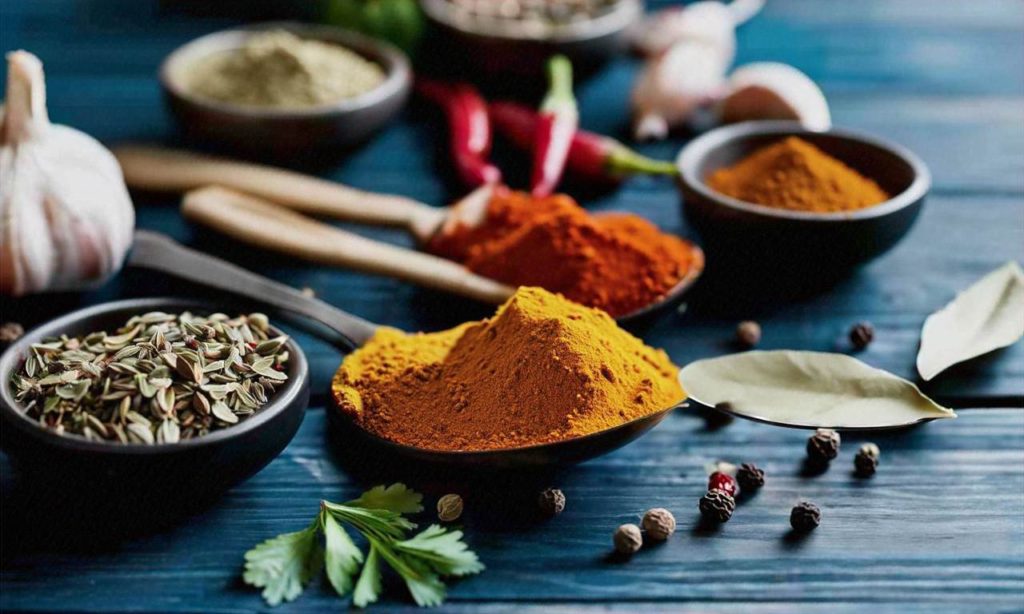
Oils
For infused oils, choose quality oil with a neutral flavor that will let the spices shine through. Top options include:
– Grapeseed oil
– Sunflower oil
– Safflower oil
Extra virgin olive oil can also work well, but has a strong flavor of its own.
Vinegars
White wine vinegar and champagne vinegar have subtle flavors that complement, but don’t overwhelm herbs and spices. Apple cider vinegar is another great choice. Stay away from dark vinegars like balsamic, red wine vinegar or sherry vinegar — these can overpower other flavors.
Process for Infusing Oils and Vinegars
There are a few methods you can use to infuse oils and vinegars at home:
Stovetop Method
Add herbs, spices and oil or vinegar to a saucepan. Heat over low, keeping the temperature between 160°F and 180°F for 15 to 30 minutes. Cool completely before bottling.
Oven Method
Combine ingredients in an oven-safe dish or jar. Bake at 200°F for 2 to 3 hours. Cool completely before bottling.
Cold Infusion
Combine room temperature oil or vinegar with herbs and spices in a jar or bottle. Store in a cool, dark place, shaking daily for 2 to 6 weeks. Strain out solids before use.
No matter what infusion method you choose, proper storage is critical for safety. Make sure to strain out all herb and spice solids, as these can introduce bacteria and lead to spoilage. Store infused oils and vinegars in sterilized bottles or jars in the refrigerator for up to 6 months. Freeze for longer storage.
Using Your Infused Oils and Vinegars
The possibilities are endless when using your homemade infused oils and vinegars!
– Use them as marinades and salad dressings
– Make herb-infused vinegar shrubs for cocktails
– Use spice-infused oils for sautéing aromatics like onions and garlic
– Make infused vinegar pickles
– Use infused oils for bread dipping
– Drizzle infused oils over hummus, pasta, grilled meats, soups and more
– Splash infused vinegars into pan sauces and gravies
Some delicious flavor combinations to try:
– Lemon-Rosemary Oil
– Orange-Clove Vinegar
– Cinnamon-Cardamom Oil
– Lavender-Thyme Vinegar
– Spicy Chili Oil
Feel free to experiment with your own herb, spice and flavor combinations too. Track what infusions you create and how you end up using them. Over time, you’ll discover which combinations you use most in your cooking with spices.
Safety Tips When Infusing Oils and Vinegars
When making infused oils and vinegars at home, be sure to follow proper food safety guidelines:
– Make sure all equipment, bottles and jars are completely sterilized first
– Use dried herbs and spices rather than fresh
– Strain out all herb and spice solids after infusing
– Refrigerate after making, for up to 6 months
– Check regularly for signs of spoilage or mold
– Discard any oils or vinegars that smell or look off
With the proper technique, infusing your own oils and vinegars can allow for creativity in the kitchen. You’ll end up with quality, artisanal products that make great gifts or cooking ingredients. Use our tips to guide you in choosing ingredients, methods and flavor combinations. Over time, you’ll learn exactly how to infuse oils and vinegars with spices tailored to your taste.
Making Your Own Spice Blends
Creating your own signature spice blends is a great way to add unique flavors to your cooking while saving money. It also allows you to control the quality and freshness of the spices you use. When making DIY spice blends, keep these tips in mind:
Get to Know Your Spices
Before blending your own spices, take the time to experiment with different spices individually. Pay attention to each spice’s flavor profile, potency, and uses. Understanding the characteristics of individual spices will help you better balance and blend them. Some spices to familiarize yourself with include cumin, cinnamon, ginger, turmeric, oregano, basil, and garlic powder.
Start with a Base Spice
Many custom spice blends are anchored by a base spice that makes up the largest portion of the mix. Common base spices include salt, pepper, paprika, and cumin. The base creates the blend’s essential flavor, while supplementary spices enhance or alter it. For example, if you wanted an Italian-inspired blend, you may use oregano as the base.
Include Complimentary Spices
Choose supplementary spices that have complementary flavors to the base spice and to each other. If your base spice is sweet, balance it with spices known for savory, spicy, earthy or citrusy notes. Popular pairings include garlic powder with basil, cinnamon with nutmeg, and cumin with coriander. But don’t limit yourself to conventional combinations – experimentation is part of the fun!
Pay Attention to Proportions
The ratios of spices in your signature blend dramatically impacts its overall flavor. Start by adding small amounts of supplemental spices to your base spice. For the average blend, the base spice should make up at least half of the total amount. From there, add supplementary spices a teaspoon at a time until you achieve the desired synergy of flavors. Tweak and adjust to fit your tastes. Keep notes so you can recreate successes.
Consider Intended Uses
Tailor your homemade spice blend’s ingredients and proportions to how you plan to use it. Blends for grilling may emphasize spicy, woodsy spices and salt, while blends meant for cookies could feature warm baking spices. If you’ll use a blend to season various foods, strike a balance with universal flavors. Envision your ideal dishes when perfecting mixes.
Store Properly to Retain Freshness
To preserve the flavors and potency of your spice blends:
– Store blends in airtight containers away from heat, moisture and sunlight. Glass jars work well.
– Only make as much of a blend as you’ll use within a few months. Spices lose potency over time.
– If blends lose their punch, add more of the bolder spices like chilies, ginger and garlic.
Get Inspired by Cuisine-Specific Blends
Each cuisine has signature spice blends that can spark ideas for your own combinations:
– Italian – basil, oregano, rosemary, garlic
– Indian – cumin, turmeric, ginger, coriander
– Mexican – cumin, chili powder, garlic, oregano
– Moroccan – cumin, cinnamon, paprika, cayenne
– Thai – lemongrass, garlic, galangal, kaffir lime
Try These Beginner-Friendly Blends
If you’re new to blending spices, these mixes make good starting points:
All-Purpose Seasoning Blend
Makes 1⁄2 cup. Good for meats, veggies and more.
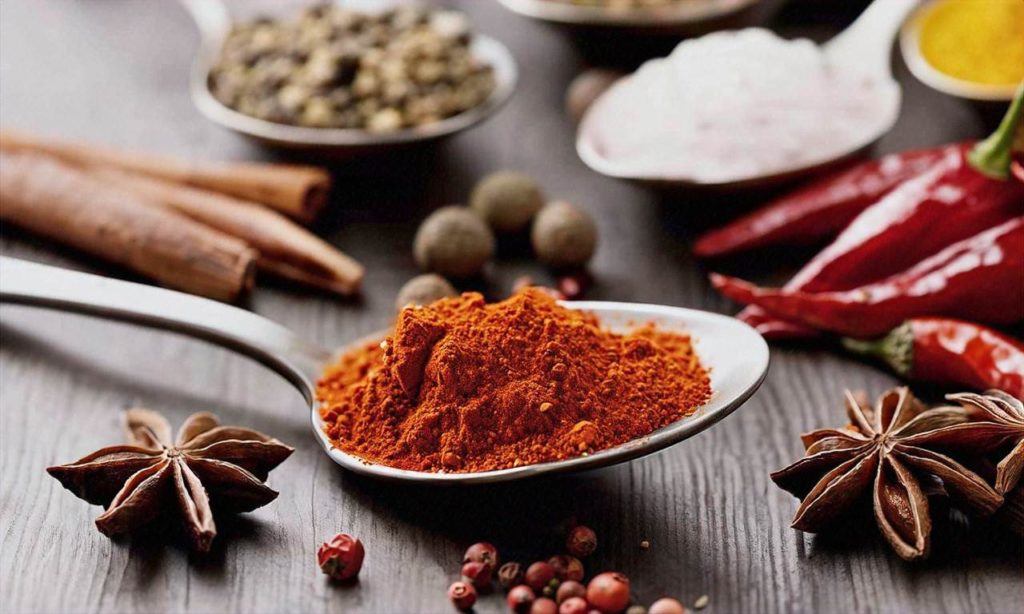
– 1⁄4 cup salt
– 3 Tbsp. paprika
– 2 tsp. garlic powder

– 2 tsp. onion powder
– 1 tsp. black pepper
– 1 tsp. dried oregano
– 1⁄2 tsp. cayenne pepper (optional)
Pumpkin Pie Spice
Makes 1⁄4 cup. Ideal for autumnal baked goods.
– 3 Tbsp. ground cinnamon
– 2 tsp. ground ginger
– 1 tsp. allspice
– 1 tsp. nutmeg
– 1⁄2 tsp. cloves
BBQ Dry Rub
Makes 1⁄2 cup. Use on grilled meats, tofu and tempeh.
– 1⁄4 cup brown sugar
– 2 Tbsp. smoked paprika
– 1 Tbsp. chili powder
– 1 Tbsp. ground cumin
– 2 tsp. garlic powder
– 2 tsp. salt
– 1 tsp. pepper
We hope these tips inspire you to experiment with crafting your own unique spice blends! Feel free to tweak flavors to match your tastes and culinary creations.
